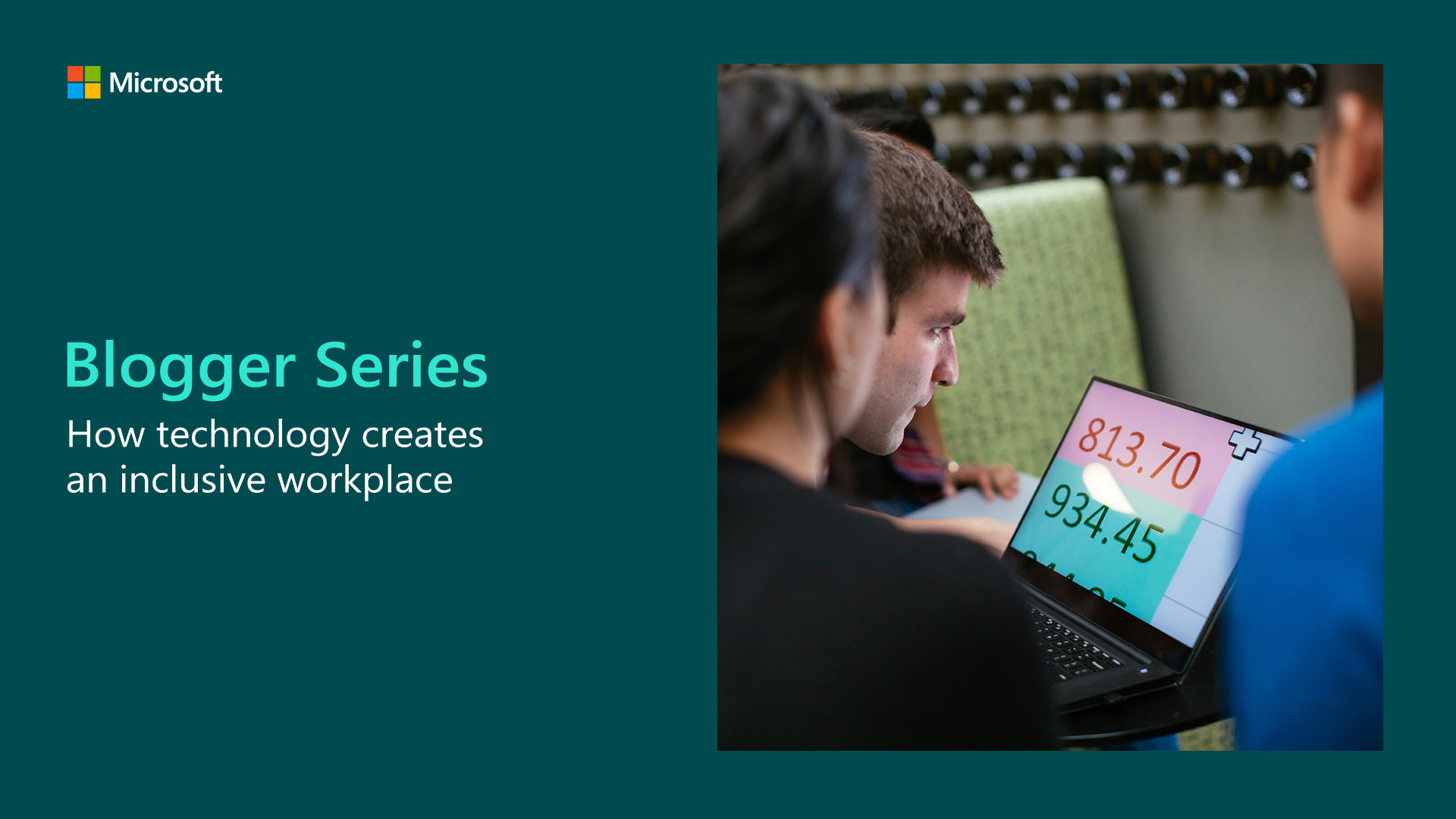
How technology creates an inclusive workplace

Sometimes the greatest gift you can give another person is to simply include them. This is something I remind myself of daily, in both my personal and professional life.
As someone with dyslexia, I’m passionate about inclusion. I spent most of my childhood undiagnosed, struggling to read and write until, at the age of 14, I started getting the support I needed. That, however, ended abruptly when I left education and started in the workplace. I’d often try to hide my dyslexia and, until just a few years ago, I’d send emails to my partner and friends for them to proofread to avoid embarrassment and highlight my accessibility needs.
I’m far from being alone.
Inclusive by design
With more than a billion people in the world with disabilities, there’s no limit to what people can achieve when technology reflects the diversity of those who use it. Microsoft has often stated its goal to ‘empower every person and every organisation on the planet to achieve more’.
It’s so important that we build on inclusion, whether it’s in the workplace or through the technology we use. By being inclusive by design we all benefit – a great example of this is kerb-cutting. One of the first lowered kerbs sprung up in Michigan in 1945, to help make public streets accessible to disabled WWII veterans.
Today, everyone benefits from kerb cutting. If you’ve ever pushed a trolley, a pram, carried heavy bags, walked with crutches, or just had a long day, lowered curbs have helped you.
Hidden disabilities
At last year’s Future Decoded, former Secretary for Work and Pensions, Esther McVey, told a rapt audience that ‘when technology is designed to be assistive, it can become technology for everyone.’
This includes hidden disabilities like mental health and well-being, which the World Health Organisation refers to as being fundamental to our collective and individual ability to think, emote, interact with each other, earn a living, and enjoy life.
This makes it a top priority for any employer looking to help their team reach their full potential without burning them out.
A recent Microsoft study of 1,400 information workers found that 40% of people work outside of regular hours in a way that interferes with family time. The report also found that 70% of professionals don’t fully unplug from work. It stated ‘You need to regenerate your energy. Unplugging is an emotional recharge that we all need.’
Modern technology, far from connecting people to work 24/7, should be harnessed to help people achieve more during work hours. That way, they can truly appreciate their downtime without negatively impacting their mental health.
Native accessibility
At Phoenix, this is something we live and breathe every day. My role, as Modern Workplace and Accessibility Lead, is to help our customers understand the capabilities of Microsoft 365. This often involves running a Customer Immersion Experience, letting customers get hands-on with the tools.
During these sessions, the team and I always showcase the accessibility features natively built into Microsoft 365. There are two reasons why we do this.
It allows business leaders to understand how the tools will support their employees – a reminder that we too believe in the ethos of ‘empowering every person, every organisation.’
It also lets us highlight that we’re all aging into accessibility. Let’s face it, at some point in our life, we’re all going to have accessibility needs. It might be our vision or hearing that fades, or mental health issues get the better of us. But accessible tools mean they shouldn’t stop us performing at the best of our ability.
Technology as an enabler
Technology today is letting more of us to do more than ever before; it enables us to build an inclusive workplace that works for everyone.
We’ve worked with companies across the public sector to do just that, such as the Vale of Glamorgan Council.
In a bid to reduce costs, the council faced a choice: cut vital services or transform the organisation. They opted for the latter. This meant using Microsoft 365 to create a digitally enabled workforce that’s more productive, collaborative, agile, and mobile. The council serves a diverse range of people with different accessibility needs, like mobility and translations. Microsoft 365 implementation now means the council has transformed into an inclusive workplace able to quickly offer accessible services to all their customers.
Digital transformations like these create tech-enabled workplaces designed to support organisations, employees, and customers reach their potential.
And that’s the power of inclusion.
The modern inclusive workplace
Do you operate an inclusive workplace? Now is the ideal time to consider how to give the gift of inclusion to everyone across your organisation.
To help you on your journey, I’ll be discussing the topic of mental health in the workplace at this year’s Microsoft Future Decoded.
Join me at this exclusive session ‘How to Manage Mental Wellbeing in the Modern Workplace’ to explore how you and your organisation can better manage the mental health of your employees.
Book your place on this Future Decoded session
About the author
 David Brown is the Modern Workplace and Accessibility Lead at Phoenix helping Public Sector organisations understand the capabilities and business benefits of M365. He has recently obtained Modern Workplace Business Value Master Status for his contribution to the Business Value Program. He has a passion for accessibility and inclusion, helping build out Phoenix’s accessibility offerings.
David Brown is the Modern Workplace and Accessibility Lead at Phoenix helping Public Sector organisations understand the capabilities and business benefits of M365. He has recently obtained Modern Workplace Business Value Master Status for his contribution to the Business Value Program. He has a passion for accessibility and inclusion, helping build out Phoenix’s accessibility offerings.




